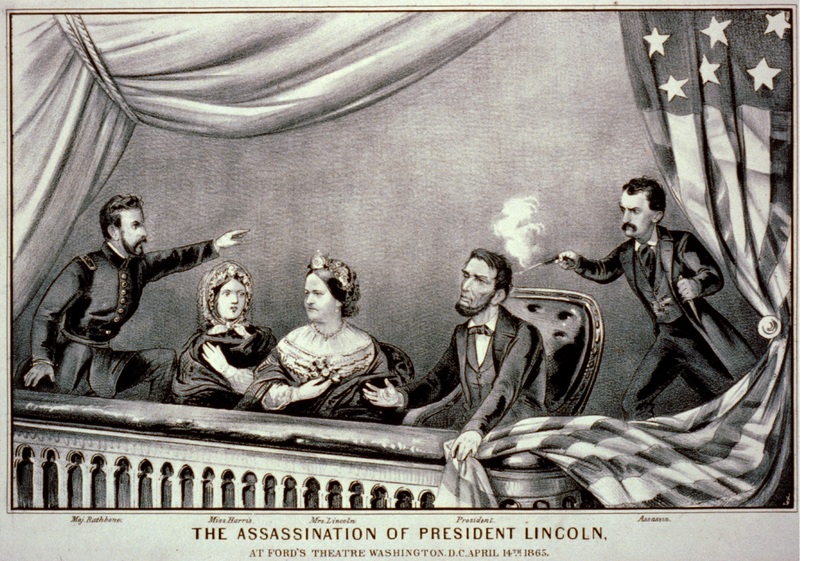The Assassination of Abraham Lincoln
Posted By Norman Gasbarro on January 11, 2012
Most stories of the assassination of President Abraham Lincoln begin the same way. The author gives the date of Friday 14 April 1865 and mentions that Lincoln was taking in a play as a form of winding down from the pressures of office and four years of war. A brief description of the activities of the assassin then follows. Before the end of the play, a shot is fired, the assassin leaps to the stage and then disappears out the back door of the theatre. A manhunt follows, the assassin is tracked down, conspirators are found and tried, and four of those found guilty are executed. The country goes on from the transfer of power and an era of reconstruction and reconciliation follows.
If that were all there were to the story, it wouldn’t be told and re-told.
What do we really know that happened that night – and in the days before and the days that followed?
Over the years, different authors and historians have embellished the story – with both fact and fiction. There has been an attempt to unravel and expose conspiracies. Documents have been collected. Artifacts have been studied. Museums have devoted entire exhibits to the assassination. Different approaches have been pursued, and the assassination and the people and events surrounding it have been the subject of speculation, curiosity, and in some cases, Lincoln himself has become the object of religious and/or patriotic reverence.
Hundreds of articles and books have been written on the subject.
One perspective that has not yet been fully explored is the Pennsylvania connections to the assassination. In a series of posts to follow, the various characters that took part in the aspects of it – from the players in the theatre, to the members of the audience, the members of the various suggested conspiracies, those who took part in the search and capture of the alleged perpetrators as well as in the trial – aspects will be examined that heretofore have not been given much thought. Have logical conclusion been drawn from the information? What has been speculative and hypothetical?
In these future posts, legends and hoaxes will be explored. There will be book and article reviews and analyses of original sources. Questions will be asked which will hopefully lead to further research and understanding of what happened that night in Washington – and of the events and circumstances surrounding it. Readers are always invited to comment on posts and offer suggestions as well as new information.
The post tomorrow will explore an arrest made in Harrisburg, Dauphin County, Pennsylvania, in the days immediately following the assassination – and pose some serious questions about why and how such principal characters were allowed to leave Washington.
The picture at the head of this post is entitled Assassination of Abraham Lincoln and is from a lithograph by Currier and Ives. It is how many people imagine the moment of the assassination. From left to right: Henry Rathbone, Clara Harris, Mary Todd Lincoln, Abraham Lincoln, and John Wilkes Booth. This image is available from the United States Library of Congress‘s Prints and Photographs division under the digital ID cph.3b49830.
The picture below is of a playbill from Ford’s Theatre from 14 April 1865. On it are the names of the members of the cast of Our American Cousin. The source of both pictures is Wikipedia.
For a previous post describing a new, best-selling book on the Lincoln assassination, see: Bill O’Reilly Book on Lincoln Assassination.
Finally, on a personal note, Abraham Lincoln has always been a fascinating subject for study. Only recently, was it discovered that there is a family connection – distant although it may be. The Lincoln “genealogical trail” goes through his roots in Pennsylvania back to Great Britain and eventually connects with the Plantagenet line, where the common ancestor is found. A different line of descent from this common Plantagenet ancestor came into America in the 17th century with eventual settlement of his descendants in the Lykens Valley. These lines have been previously reported on this blog. See: Royal Ancestry of President Abraham Lincoln and Buffington Family in the Civil War – Lykens Valley.
 ;
;




Comments